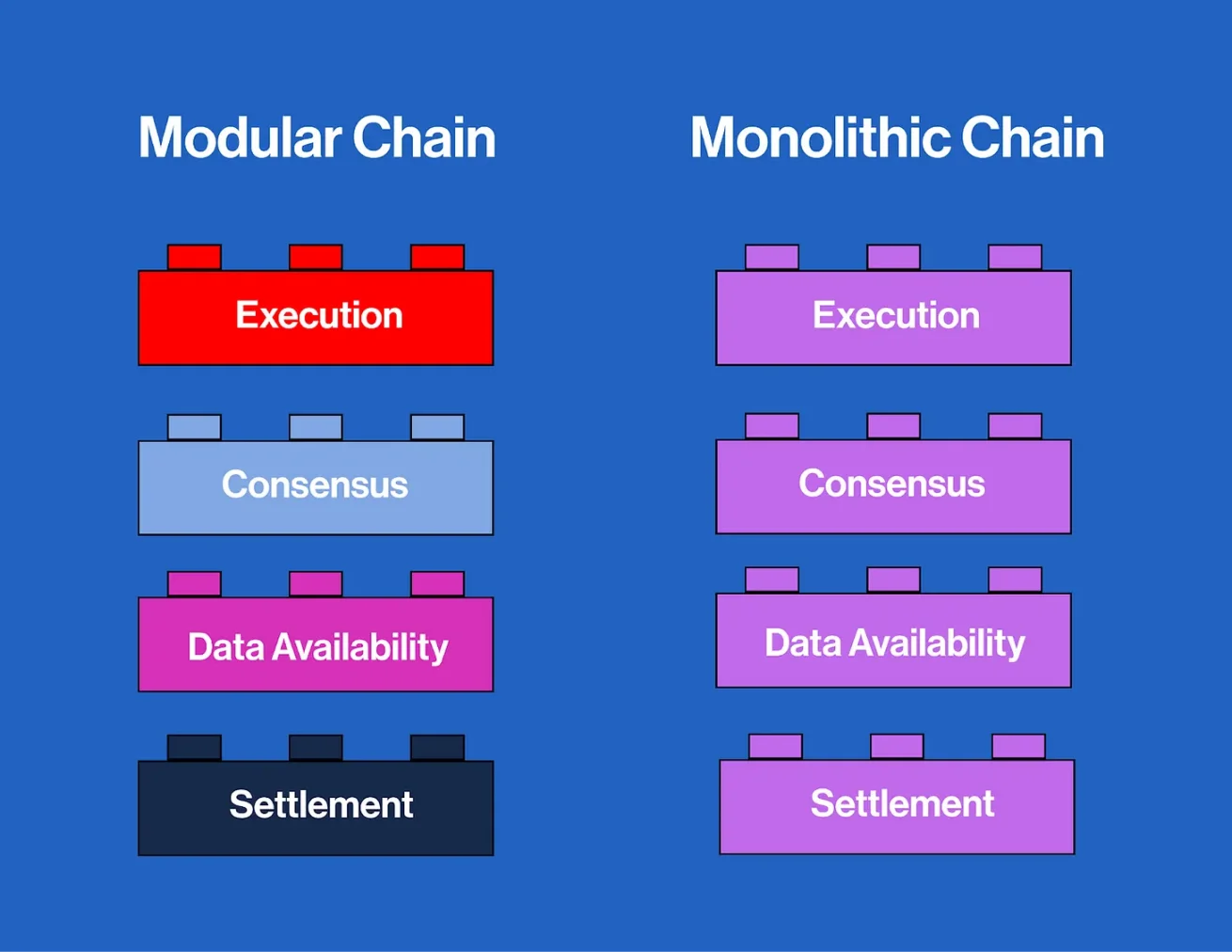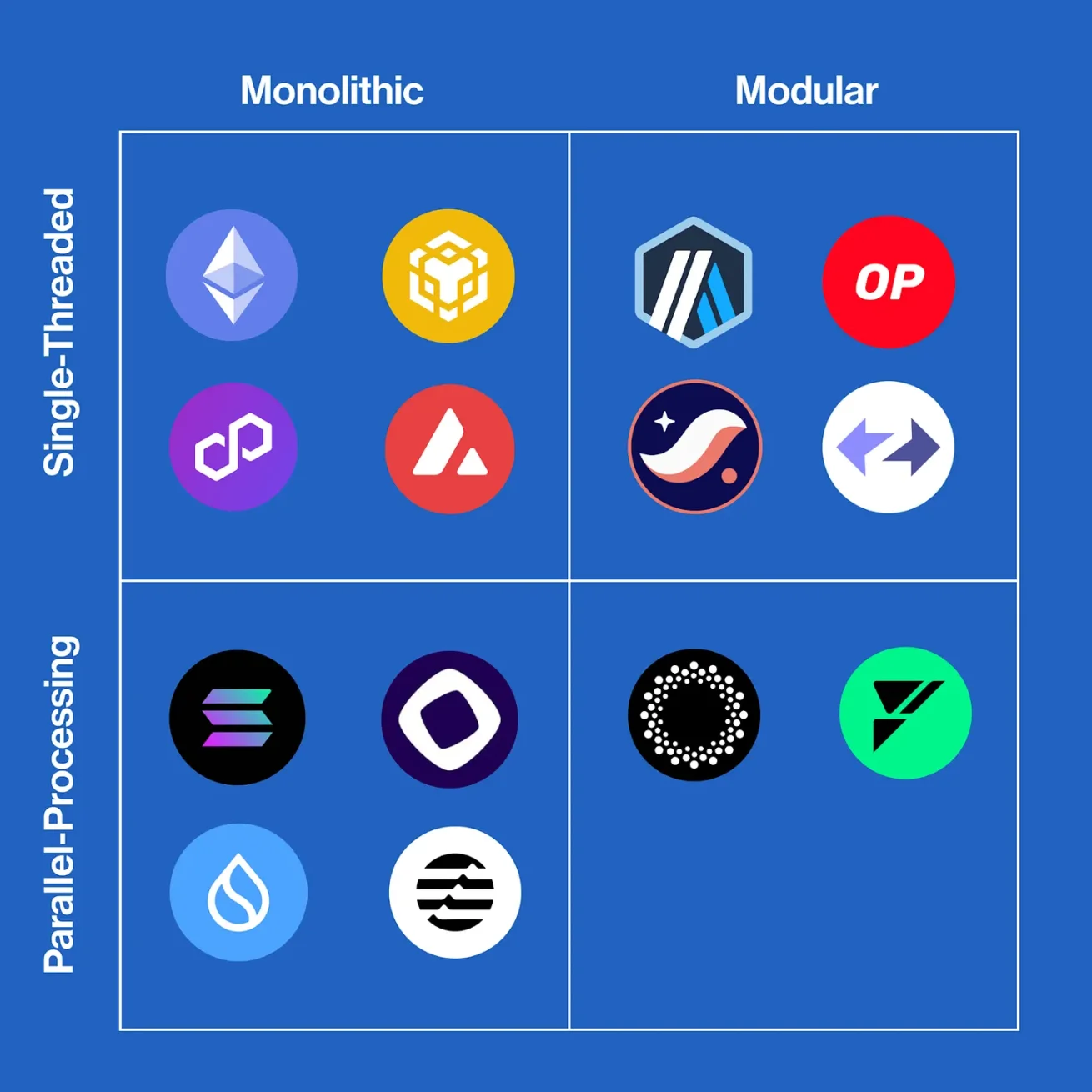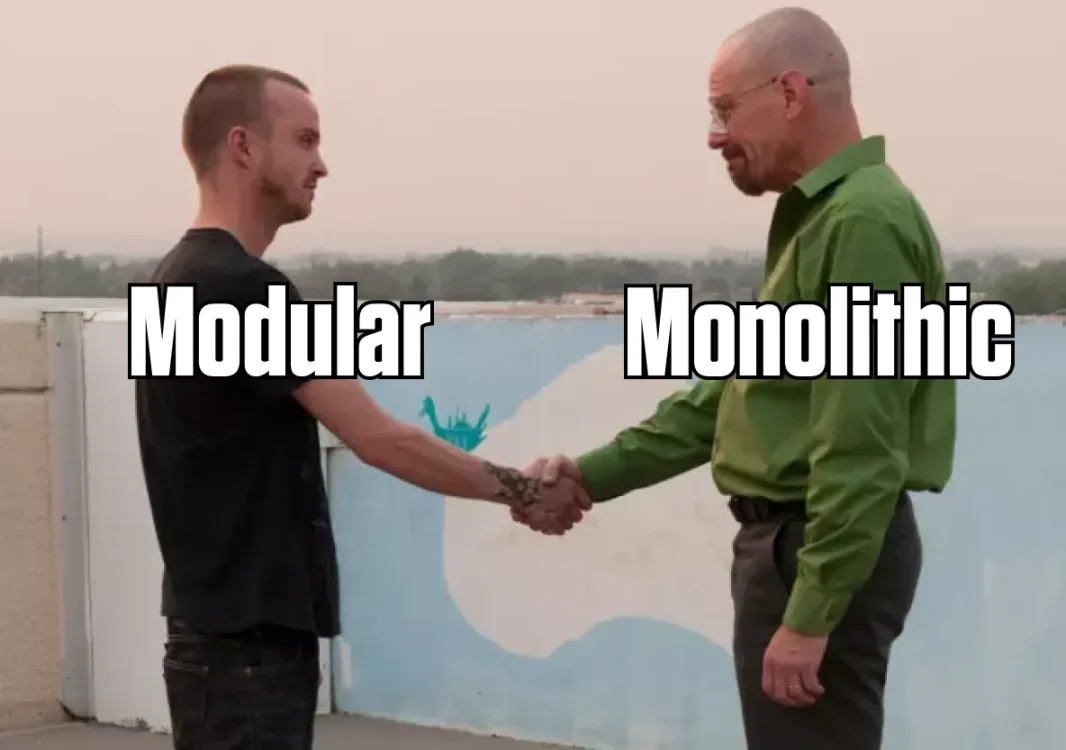Author: Nosleepjon
Translation: Luffy, ForesightNews
Over the past few months, while browsing Twitter, I have been forced to read a lot about the progress in the field of blockchain scalability. This has made me both unhappy and happy. You may have seen some propaganda and debates about modular blockchains and monolithic blockchains, which have become a narrative massacre.
- LianGuai Observation | Galxe Hacked Centralized Front-end as a Breakthrough Point, DNS Hijacking or a Stubborn Problem
- Helius In-Depth Explanation of the Latest Upgrade of Solana Labs Validator Client Solana v1.16 Update
- The first year of cryptocurrencies after the FTX scandal ‘Very miserable
Each camp believes that their technical solution is better than the other. It has evolved into a narrative between monolithic blockchains and modular blockchains, with many “either this or that” remarks: “This is my chain and your chain”, “This is Solana vs Ethereum”, “My chain is faster/cheaper”, “Your chain is not decentralized”, “Hardware cannot scale”, “Rollup cannot scale”…
Despite all this noise, I am confused about both sides. How can we prove that these seemingly opposite ideas are reasonable? Don’t believe everything they say.
Let’s try something new (this is tldr):
- Monolithic blockchains and modular blockchains offer different trade-offs for different use cases;
- Both are useful, and they will grow together;
- The real competition is between monolithic and monolithic, modular and modular;
- 2 different battlefields, 2 different North Stars;
- The theory of dual suns.
I thought of this name from “Star Wars”. Tatooine’s dual suns represent the dark side and the light side, the Sith and the Jedi, etc. (Note: In the movie “Star Wars”, the planet Tatooine has two suns)
What is modular? What is monolithic?
Monolithic Blockchain
A monolithic blockchain vertically integrates the entire blockchain stack. Therefore, this type of blockchain can do all the work from processing transactions to ordering transactions to ensuring data availability. So, in simple terms, it is a blockchain that can do all the blockchain work.
By the way, I don’t think “monolithic” is the best way to describe it. I would say they are more like “integrated” blockchains, but for the sake of recognition, I will stick with the term monolithic blockchain.
Modular Blockchain
A modular blockchain focuses on different parts of the blockchain stack, such as focusing on execution with Rollup or focusing on data availability with Celestia. By separating different components, different teams can engage in specialized work and innovation together. Each blockchain becomes a Lego block, and then these specialized modular chains can be combined to build a more scalable blockchain.
The modular blockchain is much more complex than I have described. To learn more, please click here.
The Landscape of Scalable Blockchains
To understand the scalability of blockchains, I have summarized a rough framework. Some disclaimers:
- Here, the focus is on the execution layer (the chain that processes user transactions) because they face users and imply that the rest of the modular stack is working behind the scenes;
- It is oversimplified and generalized, omitting many details;
- For simplicity, ZK Rollup and Optimistic Rollup are mixed together, but they are quite different;
- Your favorite blockchain may be missing from the picture (you can contact me on Twitter);
Here is the framework I am currently considering:
Single-threaded Monolithic Blockchain
A monolithic blockchain that processes one transaction at a time. Due to limitations, most have shifted towards Rollups or horizontal scaling roadmaps.
Examples: Ethereum, Polygon, Binance Smart Chain, Avalanche
Parallel Processing Monolithic Blockchain
A monolithic blockchain that processes multiple transactions at a time.
Examples: Solana, Monad, Aptos, Sui
Single-threaded Modular Blockchain
A modular blockchain that processes one transaction at a time. There are more subtle differences here that are not detailed in this article.
Examples: Arbitrum, Optimism, zkSync, Starknet
Parallel Processing Modular Blockchain
A modular blockchain that processes multiple transactions at a time.
Examples: Eclipse, Fuel
Key Points:
- This is a scalability arms race, and single-threaded monolithic blockchains lag behind in speed, cost, and user experience compared to parallel processing monolithic blockchains like Solana, which is not a good sign for widespread adoption.
- The introduction of modular blockchains/Rollups provides another scalability path, namely “horizontal scaling,” but it has yet to be fully explored. Optimistic Rollup, ZK Rollup, and application-specific chains are some examples, especially ZK Rollup, which is still in its early stages but worth waiting for.
- What I find most interesting is the upcoming parallel processing modular Rollup, such as Eclipse, which leverages the best parts of modular stack and parallel processing design to build a blockchain that may be comparable to existing parallel processing monolithic chains in terms of speed and cost.
Wait, is Nosleepjon advocating against Ethereum, against Solana, and in support of modular blockchains? No.
Monolithic Blockchains and Modular Blockchains Will Coexist
I believe we will see both scaling strategies succeed, as they offer different trade-offs for different use cases.
Monolithic Blockchain Use Case: Easy Composition
Most users and developers start with a monolithic blockchain, which is easier to get started with as everything is ready-made.
Since a monolithic blockchain is a vertically integrated system, you don’t have to worry about infrastructure or anything else other than building smart contracts/applications.
A monolithic blockchain is ideal for general-purpose blockchain. You can compose with the most on-chain primitives, existing application ecosystems, existing communities, and the largest liquidity pools.
Building on a monolithic blockchain architecture is cheaper. Most applications don’t need their own chain, and the cost of running and coordinating chain infrastructure is high.
Modular Blockchain Use Case: Sovereign Super App
To be honest, “modular” is actually a distraction, the real benefits and theme are sovereignty/ownership.
- You can have more control and customizability, such as compliance, permissions, risk limitations, forkability/upgradability, and iterative directions.
- Fat application theory. Most value will accrue to a few applications, not the underlying chain they are on. We have already seen this on Ethereum with Uniswap, Lido, MakerDAO generating significant fees. Therefore, some super apps naturally want to capture more value by building their own application chains. This is particularly applicable to consumer applications and games, but not so much for DeFi as it disrupts composability.
- Simpler, more customizable cross-chain compositions.
- More ways to monetize. For example, you may be able to charge fees on your app chain that you cannot charge on chains you don’t control.
- Avoid noisy neighbor problem by running your own infrastructure to ensure uptime.
- More forward-thinking, smart teams innovating in different parts of the stack, with modular technologies evolving over time.
- Do you think Coinbase doesn’t know what they’re doing? They control the order book revenue and can attract customers to their base blockchain. This is something enterprises and Web2 companies would love, sovereignty over the scope of control, monetization, and easy building out of the box.
Side note: Interestingly, we have been moving forward in the narrative circle of new technologies, but always end up back to the theories proposed by Cosmos years ago.
The Endgame of Gaming
Both monolithic and modular blockchains have their merits, and there is not as sharp of a confrontation as portrayed in public opinion.
The endgame of having dual suns looks like this:
Monolithic blockchains will eventually compete with each other in the general + composable DeFi use cases.
Modular blockchain will eventually compete with sovereign super-app use cases.
- 1 dominant monolithic blockchain emerges, with some smaller alternatives.
- Modular/sovereign super-app chains + smaller Rollup/application chains in an interoperable ecosystem.
- 1 dominant monolithic blockchain emerges because consumers naturally gravitate towards a category leader. Network effects help expand liquidity, user base, developer community, brand awareness, etc. The most effective pricing and user experience are concentrated on a globally adopted monolithic blockchain.
- Some smaller monolithic blockchain alternatives will still exist, but most monolithic blockchains will perish. Similar to market share division between Uber/Lyft, Google/Bing.
- Several large-scale modular super-app chains will emerge. For these super-apps, it is more advantageous to break away from the original blockchain and launch their own blockchain rather than paying rent to a monolithic blockchain.
- A long-tail interoperable Rollup/application chain network (similar to the rise and fall of applications in an app store?)
In this case, Rollup becomes like a VC as a service provider, betting on a combination of Rollup/application chains with limited engineering time. If one succeeds, the provider will receive multiple returns on fees/tokens.
It is important not to underestimate the scale of some future Rollup/application chains. The fees generated by consumer applications with fewer than 100,000 users, such as friend.tech, are more than those of the entire blockchain like Bitcoin, Arbitrum, BSC.
So, how should we bet?
My guess:
- The native tokens of the winning monolithic blockchain may achieve currency status and become the most recognized exchange unit in the largest monolithic blockchain.
- The native tokens of the settlement layer in the modular Rollup/application chains may achieve currency status and become the most recognized exchange unit in the modular ecosystem.
- The dominant wallets and interoperability layers abstract all these application chains into a seamless user experience. For convenience, they may have pricing power to charge spreads on all integrated applications, similar to how credit card companies facilitate consumer/merchant interactions?
Final thoughts
- Draw your own conclusions and don’t let speakers force you to believe everything they say. Being loud does not mean they are necessarily right (including myself).
- I am excited to see more experiments on parallel processing Rollup and ZK Rollup that may be comparable to parallel processing monolithic blockchains in terms of performance.
- If we do indeed have a dual ecosystem of modular/sovereign chains + monolithic blockchains, then we will need scalable interoperability to address the fragmentation of liquidity and user experience. It is not just about connecting modular Rollups to each other but also connecting monolithic blockchains to other Rollups.
Like what you're reading? Subscribe to our top stories.
We will continue to update Gambling Chain; if you have any questions or suggestions, please contact us!



